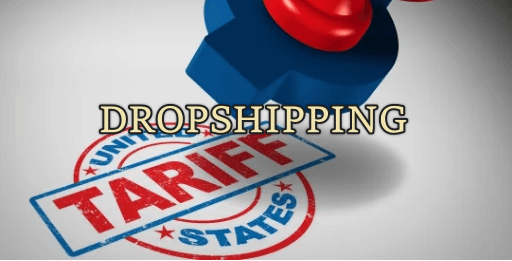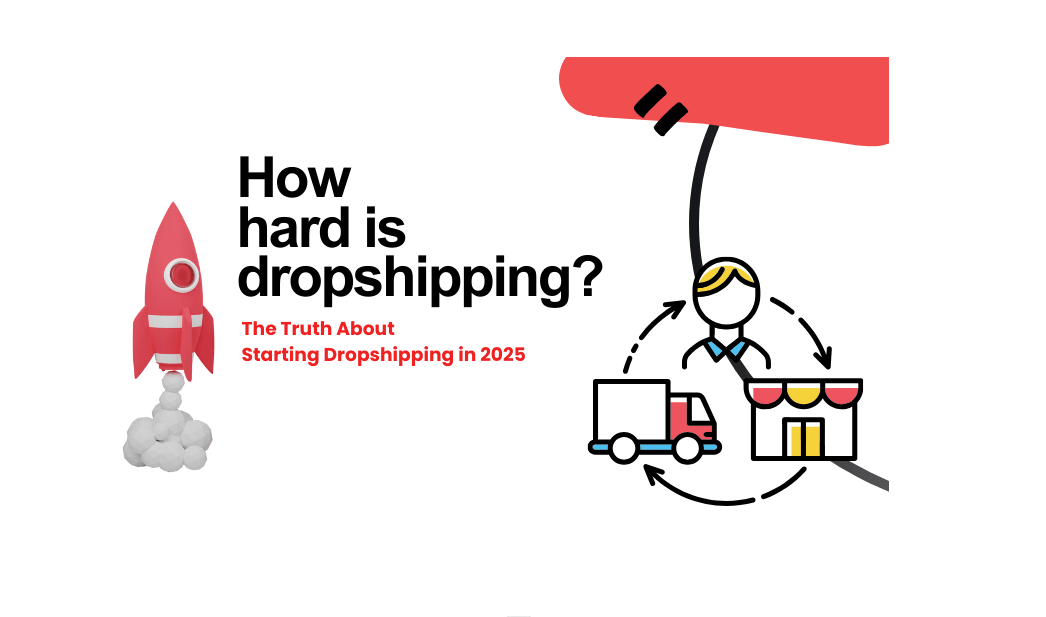“Just choose the dropshipping model that looks simplest to manage”, sounds like solid advice until reality hits hard. Your dropshipping model determines success.
Pick the wrong one, and your store will be lost among thousands of others.
So, general vs niche store—which dropshipping model to choose?
Well, both options promise profits. But success comes down to many factors. This guide will break down real data, compare the pros and cons, and let you decide which model can offer you higher profits in 2025.
What is a Niche Dropshipping Store?

A niche dropshipping store specializes in selling products within one category or niche. Unlike having a diverse range of products, these stores sell only specific product lines.
For example, consider the broad category of “baby products.” A general store might offer everything from diapers to toys. However, a niche dropshipping store would pinpoint a specific customer need or value.
Instead of simply “baby products,” they might specialize in “eco-friendly baby products,” targeting environmentally conscious parents looking for sustainable options.
The core strategy here is to dominate a “small market segment” rather than fight for visibility in an oversaturated marketplace. While this limits your potential audience—it typically results in long-term customer value.
Pros of Niche Dropshipping Store

An example of a Niche dropshipping store that sells only kids’ eco-friendly products
- Increased conversion rates: People are more likely to buy when they find a store that truly matches their interests. A well-targeted catalog helps convert visitors into buyers.
- Increased customer retention: Enthusiasts in a niche will likely come back as repeat customers, particularly when they find a store that really gets it or understands their needs.
- Reduced marketing expenses: By targeting a particular segment of customers, your marketing budget pays higher returns. Your campaigns acquire a smaller but higher-quality audience, driving higher conversion rates and lower cost per acquisition.
- Stronger brand identity: It is easier to come up with an engaging brand story when catering to one niche. Customers can immediately tell what your store is all about and what expertise you are offering.
- Fewer competitors: Instead of competing with Amazon and other large-box stores in most categories, you are competing with fewer specialty stores in your specific niche.
Cons of Niche Dropshipping Stores
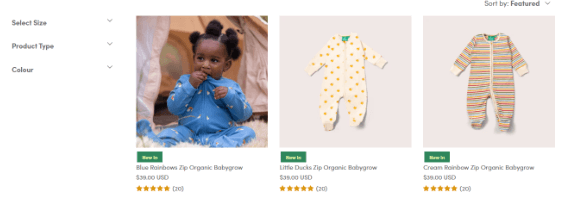
Limited products to display
- Smaller market size: Fewer potential buyers than general stores.
- Increased exposure to market volatility: If the demand for your niche drops or seasonal volatility impacts you—you don’t have the diversification to counteract losses.
- More research required: Selecting the right niche demands thorough market research in order to establish sufficient demand and acceptable levels of competition.
- Inventory restraints: Acquiring adequate diversified products within a small niche is challenging, and hence, catalog expansion is limited.
- Needs expertise: Consumers expect owners of specialty stores to provide specialized service and expert advice, for example, increased product knowledge.
What is a General Dropshipping Store?
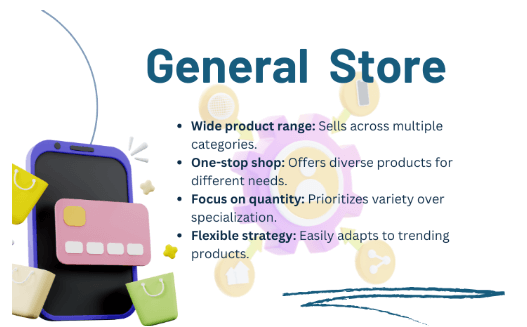
A general dropshipping store sells within various unrelated categories. And serves as a one-stop shop for different customer needs.
These stores sell everything from home and electronics to fashion and gym equipment. The emphasis of this dropshipping model is on quantity—rather than specialization.
This approach allows store owners to experiment with a range of categories of goods, without committing to any one market segment. The flexibility to change between the newest products and categories is the main advantage of the general store format.
Pros of General Dropshipping Stores
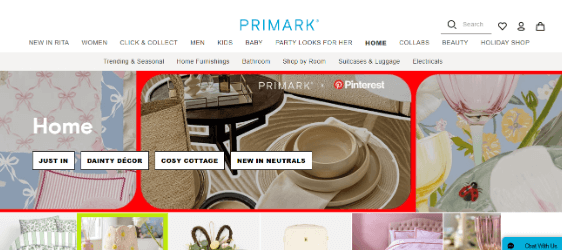
Homepage of general dropshipping store: PRIMARK
- Maximum market potential: Casting a wider net allows general stores to capture a wider market, which translates to greater overall traffic and potential volume of sales.
- Product testing simplicity: It is simple to test many products and product categories to find out what performs best without overextending in one niche.
- Trend adaptation: When market trends shift—general stores can quickly adjust their inventory to capitalize on emerging opportunities without rebranding.
- Diversified risk: One can offset losses in one product line with gains in others, providing steadier revenues.
- Easier to launch: It’s easier to launch since you’re not putting everything on the success of one niche.
Cons of General Dropshipping Stores
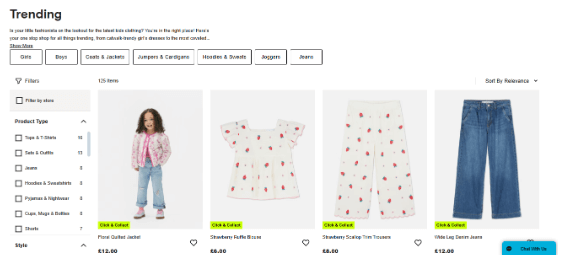
- Tougher competition: You are competing head-to-head with established retail giants and many other generic dropshipping stores, so differentiation is very hard to accomplish.
- Increased marketing expenses: Marketing to greater numbers of people tends to yield higher customer acquisition expenses, yet decreased conversion rates.
- Weaker brand identity: You can’t tell a strong brand story when your store does not have a point of focus or specialization.
- Lesser customer loyalty: Without having a clear identity, there are fewer reasons the customers will be returning to your store rather than others.
- Inventory management complexity: It is more difficult to control a large variety of catalogs across categories.
General vs Niche Store: Key Comparison
| Factor | General Store | Niche Store |
| Target Audience | Restricted to specialty-related products (20-50 items) | Particular group with defined interests |
| Brand Identity | Flexible but not instantly recognizable | Focused and highly recognizable |
| Marketing Strategy | Broad campaigns targeting different segments | Targeted campaigns that target fans in particular |
| Customer Acquisition Cost | Typically more costly ($15-30 per customer) | Usually cheaper ($8-20 per customer) |
| Conversion Rate | Lower (1-2% average) | Higher (2-5% average) |
| Competition Level | Competitive; competing with well-established retailers | Moderate; competing with specialist outlets |
| Profit Margins | Typically lower (15-25%) due to price competition | Generally higher (25-40%) by value perception |
| Product Selection | Wide variety across different categories (100+ products) | Restricted to specialty-related product (20-50 items) |
| Customer Loyalty | Less repeat buying rate (15-25%) | Increased repeat purchasing rate (30-50%) |
| Scaling Potential | Horizontal (adding more categories) | Vertical (deeper into niche) |
Which One is Better for Beginners: General vs Niche Store?
For beginners entering dropshipping in 2025, niche stores typically offer a more manageable starting point. While general stores provide flexibility, beginners often benefit from the focused approach of niche stores for several reasons:
- First, marketing becomes more straightforward with a clearly defined audience, allowing new entrepreneurs to develop targeted campaigns without overwhelming marketing expenses.
- Second, establishing brand identity happens faster, giving beginners the confidence boost needed during challenging early months.
- Third, with fewer products to manage, beginners can focus on quality control and customer service excellence.
However, the ideal approach depends on the beginner’s existing knowledge—those with expertise in a particular area may find faster success with a related niche, while those still exploring might benefit from a general store’s experimental nature before eventually narrowing focus based on performance data.
How to Choose the Best Dropshipping Niche? [3 Factors]

Picking the right niche is likely the most critical step in building a successful dropshipping business. Instead of going after bestsellers—a strategic approach can yield long-term success. The following is a structured framework based on the three most significant factors:
Factor 1: Market Feasibility (Demand, Profitability & Competitiveness)
Start with looking at steady demand patterns rather than fad trends. Use Google Trends to observe which niches are experiencing steady or rising search volume between 12-24 months.
High-ticket products (items that sell for $200+) tend to have greater returns when taking fixed costs like ads and operations into account. Choose niches where you can have at least a 30% profit margin after all expenses.
Analyze the competition by checking ad costs in potential niches. Get help from Facebook Ads Library or Google Keyword Planner to estimate costs roughly—some extremely competitive niches have historically high customer acquisition costs that rapidly consume profits. The sweet spot is where customer demand meets reasonable competition and decent margins.
Factor 2: Logistics & Consumer Behavior
Consider both product attributes and consumer psychology. For logistics, think in terms of product weight, size, and fragility—these all directly affect shipping expense and delivery difficulty. Smaller, low-weight products generally have higher margins and fewer fulfillment problems.
Simultaneously, identify patterns of brand loyalty in your target market. Ideally, find niches where consumers care about quality but are open to trying new brands with some market potential for entry.
Factor 3: Personal Connection & Audience Engagement
Your interests and expertise play a significant role in long-term success. Familiarity with a niche allows you to come up with excellent product descriptions, answer customer questions with confidence, and identify quality products. Your enthusiasm translates into more authentic marketing and better customer service.
Consider how well the possible niches align with your existing social presence or the kind of presence you wish to create. Visually storytelling products are ideal for Pinterest and Instagram, while solution products can be efficient on YouTube tutorials.
The greatest dropshipping stores combine products with clearly defined audiences where the owner of the store can talk in their own voice to customer needs and reach out to them well through the proper channels.
The successful niche is where these three aspects intersect. Thorough research in these aspects can go a long way in your success in building a successful, sustainable dropshipping business.
Top 5 Niches for Dropshipping in 2025
Before you pick a niche, know that “Made in the USA” items give a major edge with possible tariff consequences on international imports. The following are five high-ticket niches that are projected to be successful in 2025:
1. Watercraft Accessories
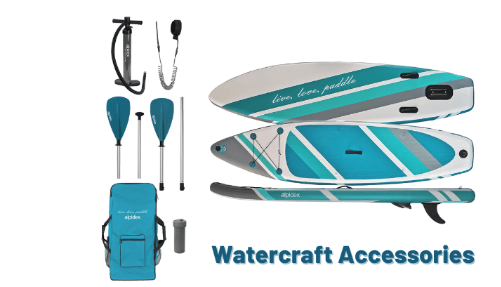
The watercraft accessories market has shown impressive growth, with the National Marine Manufacturers Association reporting that first-time boat buyers reached record levels in recent years, with 415,000 new boaters entering the market. These new enthusiasts are driving accessory sales.
Another report by the U.S. Fish & Wildlife Service tells that fishing participation has increased to 52.4 million Americans—with kayak fishing growing at twice the rate of traditional fishing. This is directly contributing to increased demand for specialized watercraft and accessories.
And what makes this niche TRULY attractive in 2025 is the domestic manufacturing advantage. US production is leading the way in watercraft and accessories, with over 65% of premium fishing kayaks and paddle boards being made in the US. Companies like Wilderness Systems, Old Town, and Bote have substantial US-based manufacturing plants.
This domestic supply chain is creating more reliable inventory availability and faster shipping times—both critical factors for customer satisfaction and repeat business in 2025.
Bestsellers under this category are:
- Luxury fishing kayaks with advanced features
- Stand-up paddle board performance
- Kayak fishing mounts and accessories
- High-quality paddles and drive systems
2. Tactical and Outdoor Equipment

The tactical and outdoor gear market has shown remarkable resilience, with the U.S. Bureau of Economic Analysis reporting that outdoor recreation contributed $454.3 billion to the U.S. GDP in recent years.
What makes this niche so appealing is the synergy of high average order values ($120-350) and outstanding customer loyalty rates. Statistics from retail analytics company NPD Group indicate that customers of tactical gear repeat purchases at a 47% higher rate than the typical e-commerce shopper.
The niche is also highly advantaged by American manufacturing capability—with more than 70% of high-end tactical goods produced domestically. This protects sellers from the new 40-60% tariffs on Chinese imports. Suppliers such as 5.11 Tactical and Condor have large U.S. production operations, which situate them as excellent dropshipping supplier partners.
Bestsellers under this category are:
- EDC (everyday carry) pouches and bags
- Survival equipment and emergency kits
- High-end tactical clothing
- Night vision accessories
3. Sculptures and Art Pieces

The decorative sculpture niche is one of the lesser-known niches in dropshipping with huge margins. Market figures from Art Basel show the mid-market sculpture market (sculptures ranging from $500-5,000) has grown 9.7% annually since 2022.
This makes this niche a market of exciting profit margins—averaging between 45-60% for the retailers. Buying data reveals that customers buying sculptures go on to purchase higher subsequent items, with 38% returning within 14 months to purchase additional items at higher prices.
American sculptors and artists control this market, with a reported 78% of mid-range sculptures sold on the internet from domestic studios. The artisanal and customized product provides natural tariff protection because imports cannot match perceived quality and authenticity.
Bestsellers under this category are:
- Abstract metal sculptures on interior decoration
- Garden and yard decorative items
- Bronze limited edition figurines
- Functional art pieces (art furniture)
4. Home Barbecue Grills
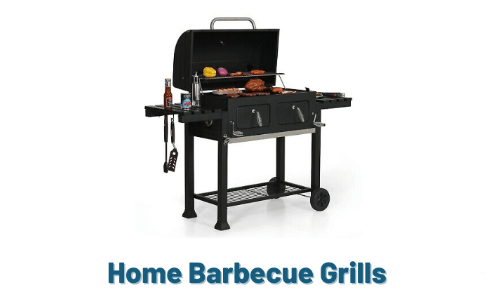
The premium barbecue grill market has experienced record growth—with Statista reporting market growth from $4.63 billion in 2023 to an estimated $5.77 billion in 2025. The 24.6% two-year growth rate surpasses broader kitchenware categories.
The Hearth, Patio & Barbecue Association reports that 64% of U.S. adults own a grill or smoker, with 56% using their grills year-round. Their consumer survey data indicates that 30% of grill owners plan to upgrade their equipment within the next few year.
Bestsellers under this category are:
- Pellet smokers and grills
- Ceramic kamado grills
- Premium gas grill sets
- Smart grills with Wi-Fi capabilities
5. Living Room Furniture

The high-end living room furniture segment continues to be a strong category in 2025, with Furniture Today reporting 17.3% year-over-year online sales increases among curated retailers. The average order value in the segment is $1,200-3,800, which presents a significant revenue opportunity.
Luxury furniture has been highly price resilient, with McKinsey studies indicating that higher-priced furniture brands have been able to hold on to 92% of their profit margins in recent inflationary environments, as opposed to only 74% for mass-market counterparts.
Bestsellers under this category are:
- Personalized upholstered sofas
- Statement accent chairs
- Solid wood side and coffee tables
- Designer lighting fixtures
The long-term health of these niches demonstrates that winning at dropshipping today is less about staying trendy and more about making sound decision-making.
Conclusion
Between a niche store and a general store, the choice isn’t profit margins—it’s what works for your skills, resources, and vision. The niche store offers more conversion rates and loyalty, but the general store offers more market penetration and flexibility. The most successful dropshippers aren’t debating what model best succeeds in any situation, but what method best succeeds in their unique situation. With tariff realignments reshaping the dropshipping environment in 2025, highlighting domestically sourced products in either model might be the best decision of all. Your journey to profitability starts here with this critical decision.
FAQs
1. Should I switch my dropshipping niche?
Niche switching relies on the performance of your store. If the existing niche lacks demand, high competition, or low margin, try another possible niche. Look at market trends, consumer interest, and your ad spend before you switch to ensure the new niche is a change worth making.
2. What type of store is a general store?
General stores sell various categories of products as compared to products in a single niche. These include trend goods, gadgets, and household necessities. General stores have the merits of product trail runs but would need effective publicity in order to perform well within the market.
3. What is the difference between a general store and a convenience store?
A general store is an offline or online store that sells a mix of products across different categories, usually targeting impulse buyers. A convenience store is an offline store that sells primarily everyday products like snacks, beverages, and household essentials at slightly elevated prices given accessibility and convenience.
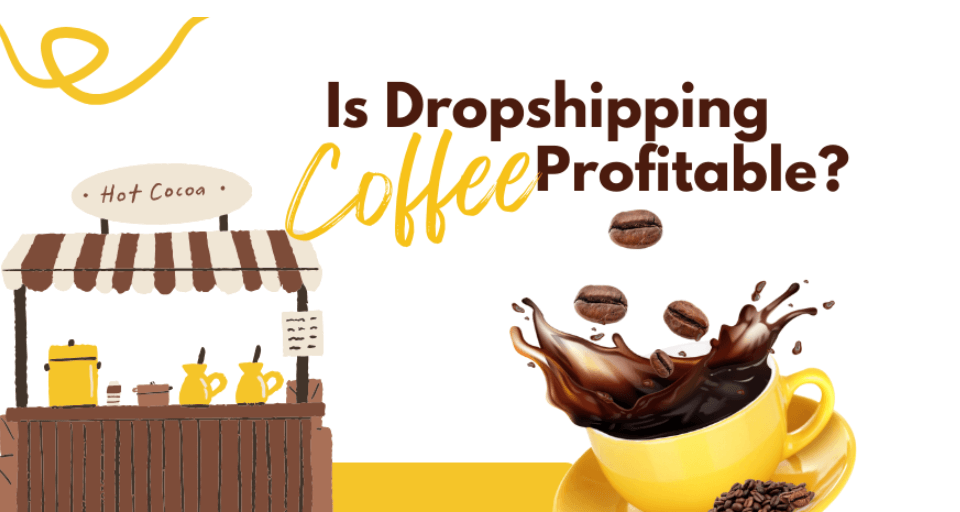
![Dropshipping General Store vs. Niche Store [2025 Data and Table]](https://www.dropshipman.com/wp-content/uploads/2025/03/general-vs-niche-store.png)
